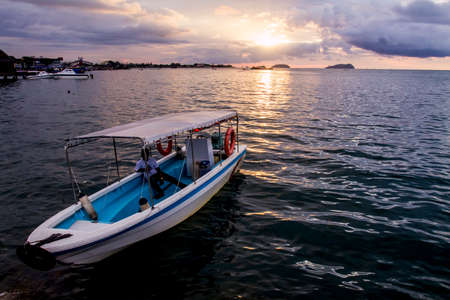1. Choosing the Right Kayak for Catfishing
If youre planning to chase big cats from a kayak, picking the right vessel is your first major decision. Unlike lightweight kayaks used for casual paddling or bass fishing, catfishing demands something more rugged and stable. Youre going to be wrestling with heavy fish that pull hard, so your kayak needs to handle the action without tipping or swaying too much.
Stability Is Key
When targeting monster catfish, you’ll often find yourself in battles that last several minutes—or even longer. A wide, stable kayak will help you stay upright and balanced while youre fighting those river giants. Look for kayaks with a flat hull design and a beam (width) of at least 32 inches. Wider kayaks offer better stability, especially when youre standing up or leaning over the side to net a fish.
Weight Capacity Matters
Catfishing isn’t exactly light-duty fishing. Between your gear, bait, tackle box, anchor, cooler, and maybe even a fish finder, things add up fast. Plus, you have to account for your own weight and the possibility of landing a 40+ pound catfish. Always choose a kayak that can handle at least 100 pounds more than your total estimated load. This ensures safety and performance on the water.
| Kayak Feature | Recommended Specs for Catfishing |
|---|---|
| Length | 10 to 14 feet (Longer for tracking and speed) |
| Width (Beam) | 32 inches or more (for stability) |
| Weight Capacity | Minimum of 350 lbs (more if youre packing heavy gear) |
| Seat Type | Adjustable padded seat with back support |
| Storage Options | Dry hatches, bungee storage, and crate space |
| Rod Holders | Flush mount or adjustable rod holders preferred |
Sit-On-Top vs. Sit-In Kayaks
For most catfish anglers, sit-on-top kayaks are the way to go. They offer better mobility, easier access to gear, and theyre much easier to get in and out of—especially if you happen to take an unexpected swim. Sit-inside kayaks can feel cramped and limit your ability to move around during a fight.
Bonus Features to Consider:
- Paddle holders: Keep your paddle secure while you’re reeling in.
- Trolling motor mounts: Great if you plan on covering long stretches of water.
- Anchor system compatibility: Helps you stay positioned over deep holes or structure where catfish hang out.
Pro Tip:
If possible, try before you buy! Many outdoor retailers and kayak shops offer demo days where you can test different models on the water. This gives you a feel for how each one handles with weight onboard—and helps ensure youre choosing the right platform for your catfishing adventures.
2. Essential Gear and Rigging for Kayak Catfishing
When youre targeting big catfish from a kayak, having the right gear can make all the difference. Unlike fishing from a bank or boat, kayak catfishing demands equipment thats compact, strong, and easy to access in tight spaces. Heres a breakdown of the must-have tackle and rigging setups that will help you land those river monsters without tipping your yak.
Tackle and Rod Selection
Catfish are known for their brute strength, so your rods and reels need to be up to the challenge. Medium-heavy to heavy power rods with fast action tips are ideal. Pair them with baitcasting or spinning reels that have a smooth drag system and can handle 20–30 lb test line. Braided line is highly recommended due to its high strength-to-diameter ratio.
| Gear | Recommended Specs | Why It Matters |
|---|---|---|
| Rod | 7’ – 8’, Medium-Heavy Power, Fast Action | Gives casting distance and backbone to fight big fish |
| Reel | Baitcaster or Spinning, Smooth Drag System | Handles heavy line and offers better control |
| Main Line | 30–50 lb Braid | Strong enough for big cats; low stretch for better sensitivity |
Rod Holders: Hands-Free Advantage
You can’t hold your rod all day while paddling or waiting for a bite, especially when fishing multiple lines. Secure, adjustable rod holders are essential. Mount flush-mount or track-mounted holders within arm’s reach so you can set the hook quickly when a cat strikes.
Pro Tip:
Use angled rod holders to keep lines spread out and reduce tangles when fishing multiple rods.
Anchoring Systems
Staying in position is crucial when catfishing from a kayak, especially in rivers or deep holes. A simple anchor trolley system lets you adjust anchor position based on current or wind direction. Pair it with a 3-5 lb folding grapnel anchor or a DIY drag chain for muddy bottoms.
Popular Anchor Options:
- Folding Grapnel Anchor: Compact, works on rocky or hard bottom areas.
- Drag Chain: Great for slow drifting or anchoring in soft mud.
- Stakeout Pole: Ideal for shallow waters under 3 feet.
Tackle Storage & Safety Essentials
You’ll want your tackle organized and accessible. Use waterproof tackle trays stored in milk crates or kayak-specific gear bags secured with bungee cords. Don’t forget safety gear like a PFD (personal flotation device), whistle, headlamp, and first-aid kit—especially since kayak anglers often fish alone or at night.
Packing Checklist:
- PFD (Always wear it!)
- Tackle trays with hooks, sinkers, swivels, leaders
- Casting net or bait container (for live bait)
- Knee pads or seat cushion (for comfort)
- Fish grips & lip grippers (for handling large cats safely)
- Pliers & line cutters (keep them tethered!)
- Dry bag for phone, keys, snacks, etc.
A well-rigged kayak makes catfishing more efficient and way more fun. With the right gear dialed in, youll be ready to chase trophy cats from rivers, lakes, and everything in between—all from the comfort of your yak.
![]()
3. Top Locations to Target Catfish from a Kayak
If youre looking to hook into monster catfish from your kayak, knowing where to go is half the battle. Across the United States, there are countless catfishing hotspots that are perfect for small-vessel anglers. Whether you prefer drifting down slow-moving rivers or anchoring in warm-water lakes, these locations offer prime opportunities for catching channel, blue, and flathead catfish.
Best Kayak-Friendly Catfish Waters by Region
| Region | Top Waterbody | Main Catfish Species | Why Its Great for Kayaks |
|---|---|---|---|
| Midwest | Mississippi River (Iowa/Illinois) | Channel & Flathead | Wide backwaters and slow current make it ideal for kayaking. |
| Southeast | Santee Cooper Lakes (South Carolina) | Blue & Flathead | Shallow flats and submerged timber attract big cats; kayaks can sneak in quietly. |
| South | Tennessee River (Alabama) | Blue Catfish | Mild current and deep holes near shore provide excellent access from a kayak. |
| West | Colorado River (Arizona) | Channel Catfish | Sandy banks and calm stretches are easy to paddle and fish from. |
| Northeast | Susquehanna River (Pennsylvania) | Flathead Catfish | Ledges and boulders near shallow runs are accessible and productive. |
Lakes vs Rivers: Whats Better for Kayak Catfishing?
Both lakes and rivers have their advantages when it comes to kayak fishing for catfish:
| Water Type | Pros | Cons |
|---|---|---|
| Lakes | – Stable water – Easier paddling – Great for anchoring over structure |
– Can get windy – Fish may be deeper or spread out |
| Rivers | – Constant flow brings food to fish – Easy to drift-fish – Natural ambush points like logjams & bends |
– Currents can be tricky – Requires more navigation skill |
Tips for Picking the Right Spot on the Water
- Bait-rich zones: Look for areas with baitfish activity — catfish are never far behind.
- Cuts & drop-offs: Use your fish finder or a depth map to locate sudden depth changes where cats like to hang out.
- Tight cover: Submerged logs, brush piles, or rock ledges are prime spots — especially for flatheads.
- Eddies & slack water: In rivers, target eddies behind rocks or bends where catfish wait out of the current.
- Docks & nighttime lights: On lakes, docks lit at night often attract baitfish — and the big predators that follow them.
Paddle Smart: Safety First!
No matter where you fish, always check local conditions before heading out. Wear a life jacket, bring a whistle, and keep an eye on weather forecasts. Some of these waters can change fast — especially rivers after heavy rain.
Your Local Honey Hole Might Be Closer Than You Think
You don’t always need to travel across the country to find great kayak catfishing action. Check with your state’s wildlife agency for local catfish stocking reports or talk with anglers at your local bait shop. Many community lakes and rivers offer surprisingly good fishing if you know where to look — and how to approach them from a kayak.
The key is staying mobile, staying quiet, and keeping your eyes peeled for signs of big whiskered beasts lurking below the surface.
4. Techniques for Hooking and Fighting Big Cats
When youre kayak fishing for catfish, especially big ones, the challenge isnt just in finding them—its in hooking them right and getting them safely to your boat without flipping or losing your gear. Heres how to master the methods that help you land monster cats from a small vessel.
Bait Selection: Know What They Crave
Big catfish are opportunistic feeders, but they still have preferences. The right bait can make or break your day on the water. Here’s a quick breakdown of effective bait choices:
| Bait Type | Best For | Notes |
|---|---|---|
| Cut Bait (e.g., shad, bluegill) | Blue Catfish, Flathead | Strong scent draws in bigger fish |
| Live Bait (e.g., minnows, sunfish) | Flathead Catfish | Preferred by flatheads; keep it lively |
| Dough Balls/Stink Bait | Channel Catfish | Great for numbers, less so for size |
Hooking Techniques: Timing is Everything
In a kayak, you don’t have the luxury of space or leverage like you would on a larger boat. So hooksets need to be smooth and intentional.
- Circular Hooks: Let the fish hook itself—just reel down steadily when you feel resistance.
- Kahle or J Hooks: Use a firm but controlled upward motion to set the hook.
- Tight Lines: Always keep your line tight to avoid slack that can let a big cat throw the hook.
Anchor vs. Drift Fishing: Choosing Your Strategy
Anchor Fishing
This method keeps you in one spot, ideal for targeting structure where big cats hide—like submerged logs or deep holes.
- Use a quick-release anchor system for safety.
- Fan-cast multiple rods at different depths if local regulations allow.
- Bait up with cut bait to draw cats in over time.
Drift Fishing
If youre covering large areas or looking for roaming catfish, drift fishing is key. Use wind or current to move your kayak slowly while dragging baits behind you.
- Add a drift sock or drag chain to control speed.
- Suspend baits slightly off the bottom using float rigs or Santee Cooper rigs.
- Watch your rod tips closely—catfish often hit subtly during drifts.
Fighting the Fish: Stay Balanced and Patient
A trophy catfish can pull hard enough to tip a kayak if youre not prepared. Keep your center of gravity low and use these tactics:
- Stay Seated: Stand only if your kayak is built for it and conditions are calm.
- Use Rod Holders: Let your gear do some of the work while you manage balance and paddle positioning.
- Tire Them Out: Don’t rush; let the fish wear itself down before trying to bring it close to the boat.
Knot Tip:
The Palomar knot is a strong and simple choice for tying hooks when targeting big cats. Its easy to tie even with wet hands—a must on a kayak!
Lipping and Landing Safely
You’re almost there—but landing is where many anglers lose their trophy. Use a lip gripper tool or glove up and grab them by the lower jaw. Avoid lifting large cats by the line alone as it could snap or injure the fish if youre practicing catch-and-release.
The thrill of hooking into a monster catfish from a kayak is unmatched—but it takes the right gear, techniques, and mindset to bring one in safely. Stick with these tips and youll increase your chances of landing that river beast youve been dreaming about.
5. Safety Tips and Best Practices on the Water
When youre kayak fishing for catfish, especially the big ones, safety should always be a top priority. Youre working from a small vessel that can be affected by current, wind, and sudden movement—especially when a monster catfish starts pulling hard. Heres how to stay safe and make sure your trip ends with great memories and not close calls.
Stay Prepared with the Right Safety Gear
Before you even hit the water, double-check your safety essentials. Dont leave shore without these items:
| Item | Purpose |
|---|---|
| Life Jacket (PFD) | Keeps you afloat if you tip over or fall in |
| Whistle or Sound Device | Helps signal for help if needed |
| Dry Bag | Keeps phone, keys, and first aid kit dry and secure |
| Anchor System | Stabilizes your kayak while fishing in current or wind |
| Headlamp or Waterproof Flashlight | Essential for early morning or late evening trips |
Be Aware of Your Surroundings
Water awareness is key when youre chasing big catfish from a kayak. Always check the weather before heading out—windy days or strong currents can make it tough to control your yak. If youre fishing rivers, watch out for boat traffic, submerged logs, and changing water levels.
Pro Tip:
If youre night fishing for flatheads or blues, bring extra lights and reflective gear so other boaters can spot you easily.
Practice Smart Kayak Handling
You don’t need to be a pro paddler, but knowing how to control your kayak makes landing big cats way easier—and safer. When fighting a fish, keep your body centered and avoid leaning too far over one side. Use your paddle leash so it doesn’t drift away during action-packed moments.
Balance and Positioning Tips:
- Keep gear evenly distributed to prevent tipping
- Sit low in the seat when battling large catfish for more stability
- If anchoring, drop anchor from the bow or stern—not sideways—to reduce risk of flipping in current
Know Your Limits and Tell Someone Your Plan
No fish is worth putting yourself in danger. Don’t venture too far from launch points unless you’re confident in your endurance and conditions are favorable. Let someone know where you’ll be fishing and when you plan to return. That simple step could save your life if something goes wrong.
The thrill of landing a monster catfish from a kayak is unbeatable—but only when its done safely. With the right prep, awareness, and smart handling, youll not only hook into giants—you’ll make it back with stories worth telling.


